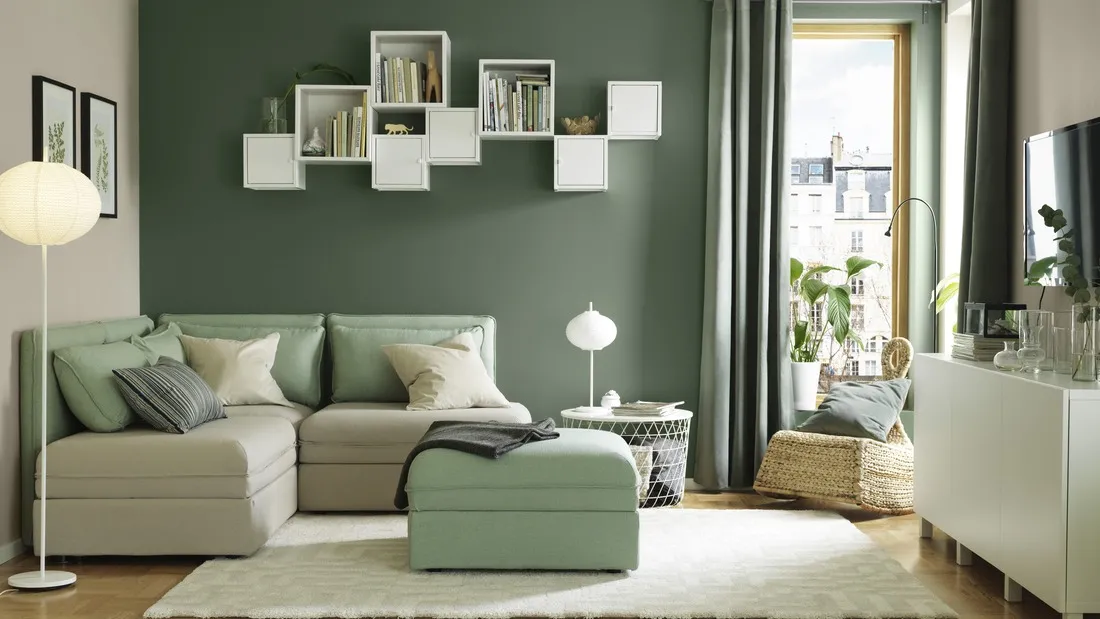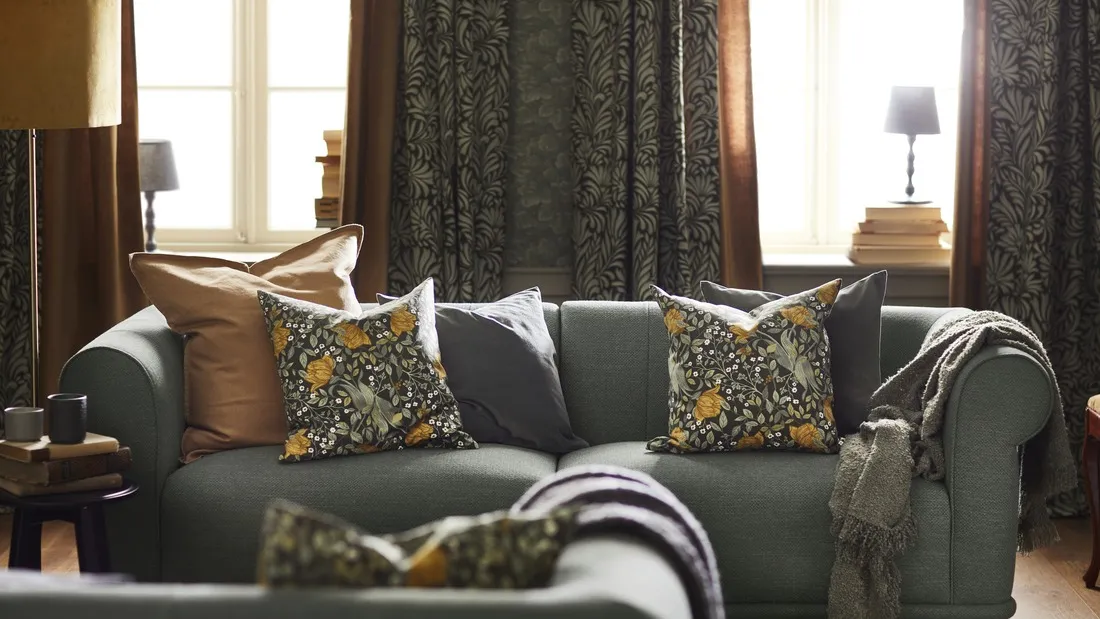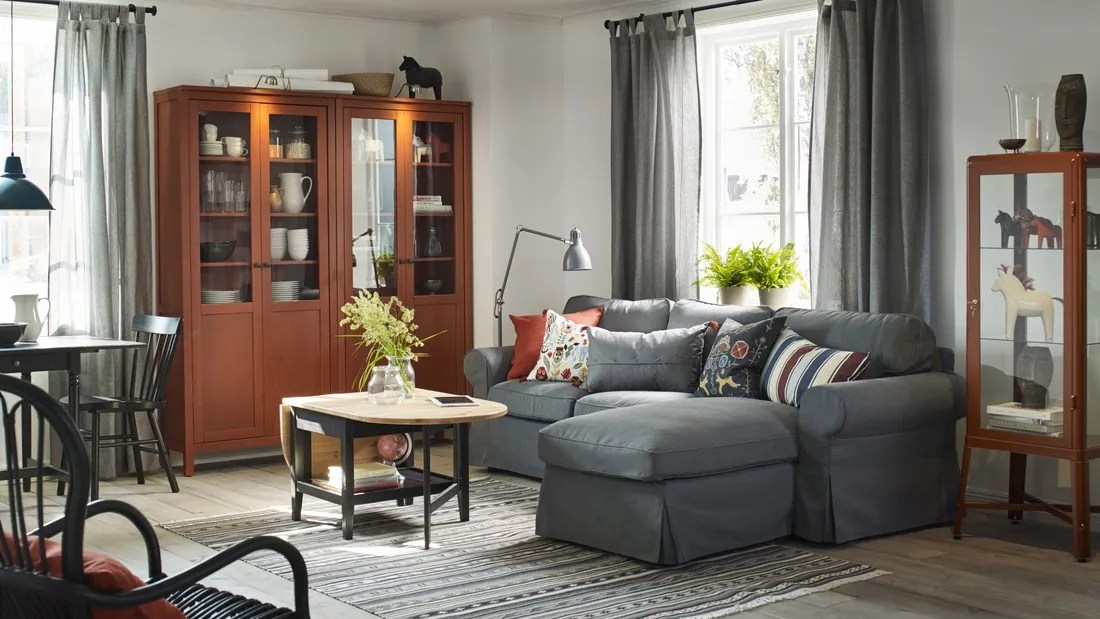Measuring curtains accurately is a crucial step in creating a harmonious and comfortable atmosphere in your home. Precise measurements ensure that your curtains fit the window width and complement the room’s decor, providing a tidy and visually pleasing result.
By determining the correct curtain size, you avoid mistakes that can disrupt the look and functionality of your curtains or drapes.
Understanding how to calculate the width of curtains and fabric requirements precisely helps achieve a professional and elegant appearance.
Follow this guide to simplify the measurement process and ensure that your curtains meet your needs, achieving the desired look and enhancing your room effectively.
Preparation before measuring curtains
Before starting the curtain measurement process, proper preparation is essential for accurate and satisfactory results. The first step is to gather the necessary tools, such as a tape measure for precise measurements, a ladder to reach high areas, and a notebook to record each measurement. Learn how to use these tools carefully for the best outcome.
Before measuring, determine the type of installation you want: will the curtains be mounted inside the window frame, above the trim, or outside the frame? This installation type will influence the measurements you need to take. Next, decide on the desired curtain height and fabric style to ensure it aligns with your room’s design.
Don’t forget to measure the width of the curtains precisely, including extra space if you want the curtains to extend beyond the window for a more dramatic effect. With the right tools and an understanding of installation and curtain height, you can take accurate proportions, avoid mistakes, and ensure that the selected curtains will perfectly meet your room’s decorative needs.
Steps to measure curtains
Accurate curtain measurement is key to ensuring a neat look that fits your room’s decor. Here is a step-by-step guide to measure the width and height of your curtains correctly:
1. Determine the installation point
Decide whether the curtains will be mounted inside the window frame (inside mount) or outside the frame (above the trim). This choice will affect how you measure the width and height of the curtains. Be sure to decide whether you want the curtains to touch the floor or hang slightly above it.
2. Measure the window width
Use a tape measure to measure from the left side of the window to the right side. If you want the curtains to cover a larger area and provide a fuller effect, add 10-20 cm to each side of the window. For example, if your window is 150 cm wide, consider adding 20 cm to each side, making the total fabric width needed 190 cm. This will also ensure that the curtains cover the window completely when closed. Note this measurement to help calculate fabric needs.
3. Measure the curtain height
Start measuring the height from the installation point. If the curtains are installed inside the window frame, measure from the top of the frame to where you want the curtains to end, either above the floor or slightly touching it.
If installed outside the frame, measure from the installation point (usually slightly above the window frame) to the floor or the desired endpoint. Add a few centimeters for a drape or overlap effect below the window, so the curtains have an elegant fall.
For example, if you measure 250 cm from the installation point to the floor and want an additional 15 cm for drape, the total curtain height is 265 cm.
4. Determine additional size
For a beautiful drape effect, add about 15-20 cm to the curtain length below the window. This provides a soft fall effect and enhances the curtain’s appearance. If you want overlap at the top or bottom of the window to cover extra area, ensure to add the necessary dimensions to your measurements.
5. Record all measurements
After measuring, clearly record the curtain dimensions, including window width, additional width for a full effect, height from the installation point to the endpoint, and extra for drape or overlap. Use your notes and tape measure to ensure all measurements are accurate and complete.
Choosing the right curtains based on size
Selecting the right curtains based on size is essential for ensuring a neat and functional look in your home. Based on your measurements, here are some tips for choosing curtains that meet your needs for various window sizes and rooms:
1. Curtains for large windows
For large windows or sliding doors, choose curtains with sufficient fabric width to provide an elegant and dramatic appearance. Ensure the curtain width is greater than the window width so the curtains can cover the entire area when closed.
To achieve a beautiful drape effect, add approximately 1.5 to 2 times the window width to the curtain width measurement. Choose heavier or thicker fabrics, such as velvet or linen, to add dimension and a luxurious look. Consider light and sun impact on the curtain fabric to match your preferences and functionality.
2. Curtains for small windows
For small windows, select curtains that match the window size without excess material that makes the room feel cramped. Use lighter, thinner fabrics to create an open and bright look.
Ensure the height is sufficient to cover the window area with a slight addition above and below for a longer, graceful effect.
Choose simpler curtain models to maintain visual balance in a small space. Given the shorter window size, ensure accurate curtain measurements to maintain proportionality.
3. Choosing suitable fabrics
The fabric of the curtains also plays a crucial role in the final result. For large windows, choose heavier and high-quality fabrics to add richness and texture. For small windows, lighter and more transparent fabrics help prevent the room from feeling too heavy.
If you need curtains that block light and maintain privacy, consider fabrics with additional lining or backing. Understanding various fabric types can help you choose according to your preferences and family needs.
By measuring carefully and selecting suitable fabrics, you can ensure that your chosen curtains have a professional look and meet both functional and aesthetic needs in your home. Explore available models and sizes in the market to achieve the best results and measure your curtains precisely according to your room’s requirements.
Common mistakes when measuring curtains
Accurate curtain measurement is crucial for creating a comfortable and aesthetically pleasing atmosphere in your home. However, common mistakes can affect the final result. One frequent mistake is ignoring the need for pleats or drape effects.
The curtains may appear too stiff and lack dynamism without adding extra pleats. Add approximately 1.5 to 2 times the window width to the fabric width measurement to achieve an elegant and flowing look.
Another issue is not accounting for curtain thickness, especially if the fabric used is thick. Ensure that the curtain height measurement includes the fabric thickness so the curtains fit perfectly. A common error is measuring from the wrong position without considering the desired installation type.
Measure from the correct position to ensure accurate results. Also, not considering the curtain model and fabric type can cause problems, especially if you choose specific fabrics or models that require special measurements.
Choose a model and fabric type according to the room’s needs and ensure that measurements include all these features. Lastly, using inaccurate tools can lead to incorrect measurements. Use a precise tape measure to ensure accurate measurements.
By paying attention to these details, you can avoid common mistakes and ensure that your curtains are not only easy to install but also fit the room’s size, creating a harmonious and pleasant atmosphere.
Measure curtains accurately and find the right options for your needs at IKEA






